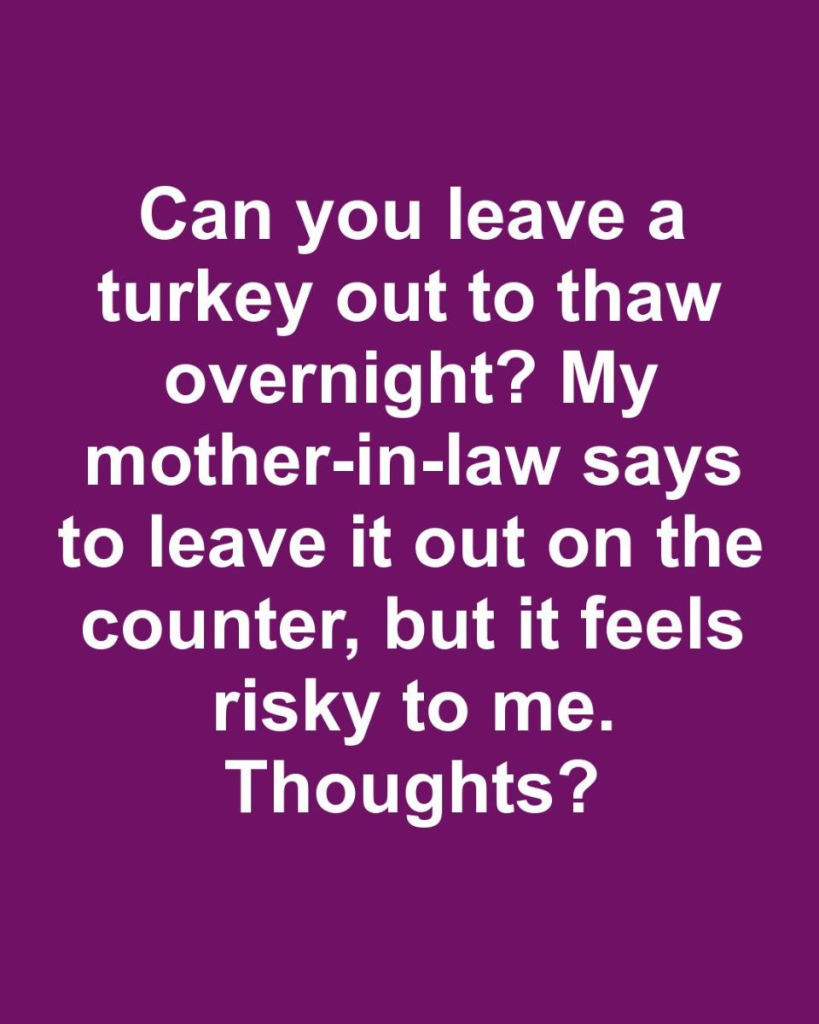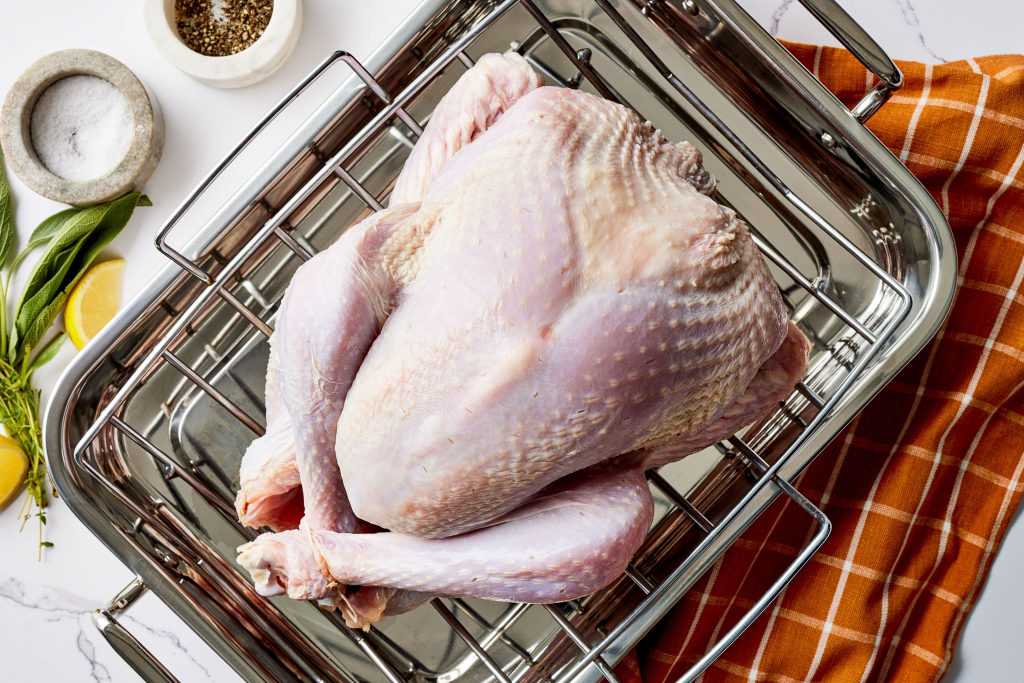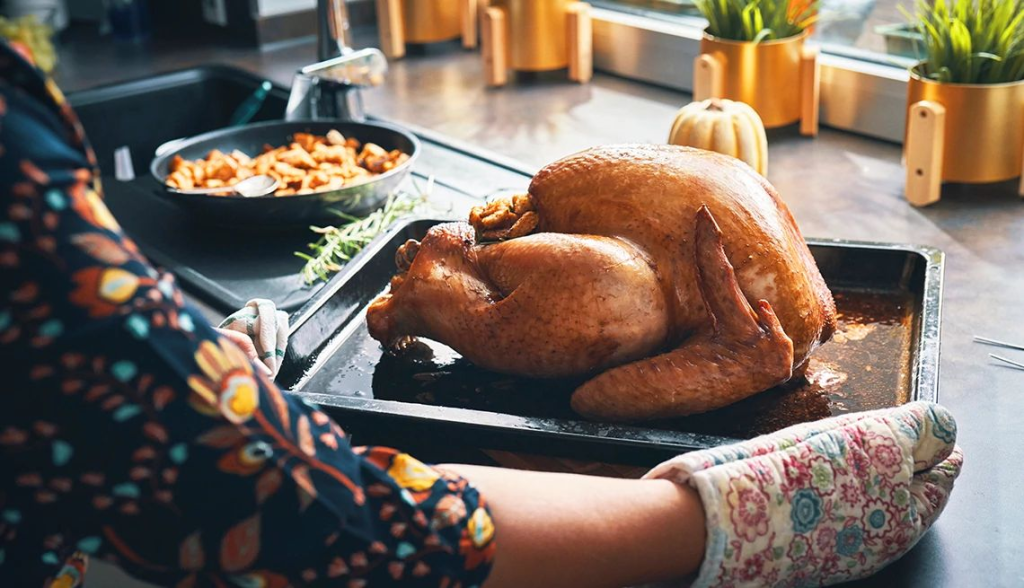So, you’ve got a frozen turkey sitting in your freezer, and the big holiday meal is just days away. You might be wondering, “Can I just leave it on the counter overnight?” Spoiler alert: don’t do that. It might seem like a quick fix, but it’s actually one of the riskiest mistakes you can make in the kitchen. Thawing a turkey safely isn’t just about taste—it’s about protecting your family from some nasty foodborne illnesses. Ready to learn the safe way to do it? Let’s dig in.

Why Thawing a Turkey Correctly Really Matters
Here’s the thing—turkey is poultry, and poultry has a reputation for carrying bacteria like salmonella and campylobacter. These microscopic troublemakers thrive in what food safety experts call the “danger zone,” which is anywhere between 40°F and 140°F. That’s the temperature range where bacteria multiply like crazy.
Now picture this: your frozen bird is sitting on the kitchen counter. The outer part starts to thaw and warm up, but the inside is still a frozen block of ice. That outer layer? It’s now hanging out in the danger zone, giving bacteria the green light to grow—and fast.
Video: How to Safely Thaw a Frozen Turkey
The Temptation of Counter Thawing (and Why It’s a Bad Idea)
We get it. Leaving the turkey out on the counter feels easy, especially when you’re juggling a million things before the holiday. But just because it’s common doesn’t mean it’s safe. Room temperature is usually around 68°F to 72°F—that’s smack in the middle of the danger zone.
Even if your kitchen feels chilly, that’s not cold enough. And don’t fall for the myth that cooking the turkey will kill everything. Some bacteria produce heat-resistant toxins, which means even a hot oven won’t always save the day.
Safe and Smart Turkey Thawing Methods
So, what’s the right way to do it? Good news: you’ve got options. Here are three methods that are USDA-approved and totally safe—if you follow them correctly.
Refrigerator Thawing: The Gold Standard

This method is your safest bet. It keeps the turkey at a constant, safe temperature while it thaws evenly throughout.
- How long does it take? About 24 hours for every 4 to 5 pounds of turkey.
- Pro tip: Put the bird in a tray or pan to catch any drips—nobody wants raw turkey juice in their fridge.
This method requires some planning ahead, but the reward is peace of mind and a perfectly thawed turkey.
Cold Water Thawing: Faster, But Hands-On
Need to speed things up? Cold water thawing is quicker, but it demands a little more attention.
- How to do it: Keep the turkey in its original packaging and submerge it in a large container or sink filled with cold water. Change the water every 30 minutes.
- Thawing time: About 30 minutes per pound.
It’s a bit labor-intensive, but if you forgot to start thawing days in advance, this method is your best bet.
Microwave Thawing: For the Truly Time-Crunched
If your turkey is small enough and your microwave is big enough, this method might save your meal.
- Check your microwave manual to see if it has a defrost setting for poultry.
- Important: You must cook the turkey immediately after thawing—no fridge time after using this method.
This method isn’t ideal for large turkeys, but it can work in a pinch.
Don’t Fall for These Turkey Thawing Myths

Let’s bust a few myths that still circulate during the holidays:
- “It’s cold outside, so the kitchen is safe.” Nope. Unless your house is a refrigerator, it’s not safe. Bacteria love room temp—even during winter.
- “I’ll just cook it really well—it’ll kill everything.” Not always. Bacteria might be gone, but their toxins can survive high heat.
- “I’ve always thawed it on the counter and never got sick.” Consider yourself lucky. Foodborne illness isn’t always immediate—and it’s not worth gambling your family’s health over a tradition.
What the Experts Say
Organizations like the USDA and CDC are crystal clear: never thaw your turkey on the counter. It’s outdated, dangerous advice that needs to stay in the past. Food scientists and chefs recommend refrigerator thawing whenever possible, and cold water thawing if you’re in a rush.
Their biggest takeaway? Plan ahead. Most turkey-related disasters happen because people didn’t give themselves enough time to thaw safely.
So, How Early Should You Start?
Video: How To Thaw A Turkey Fast – Ace Hardware
Let’s say you’ve got a 16-pound bird. If you’re using the refrigerator method, that’s roughly four full days of thawing time. Got a 20-pounder? Better give it at least five. Mark your calendar and set a reminder—it’ll save you the stress later.
If you’re going with the cold water method, you’re looking at 8 hours for a 16-pound bird. Still need planning, but a little more doable for the forgetful among us.
Conclusion: Thaw Smart, Eat Safe
Thawing a turkey is one of those little details that can make or break your holiday meal. Sure, leaving it on the counter might seem easier—but it’s just not worth the risk. By sticking with proven, expert-approved methods like refrigerator or cold water thawing, you’re not only protecting your family’s health—you’re also giving yourself the best shot at a juicy, evenly cooked bird.
So, next time someone says, “Just leave it out overnight,” you’ll know better. Play it safe, plan ahead, and enjoy a stress-free holiday feast.




